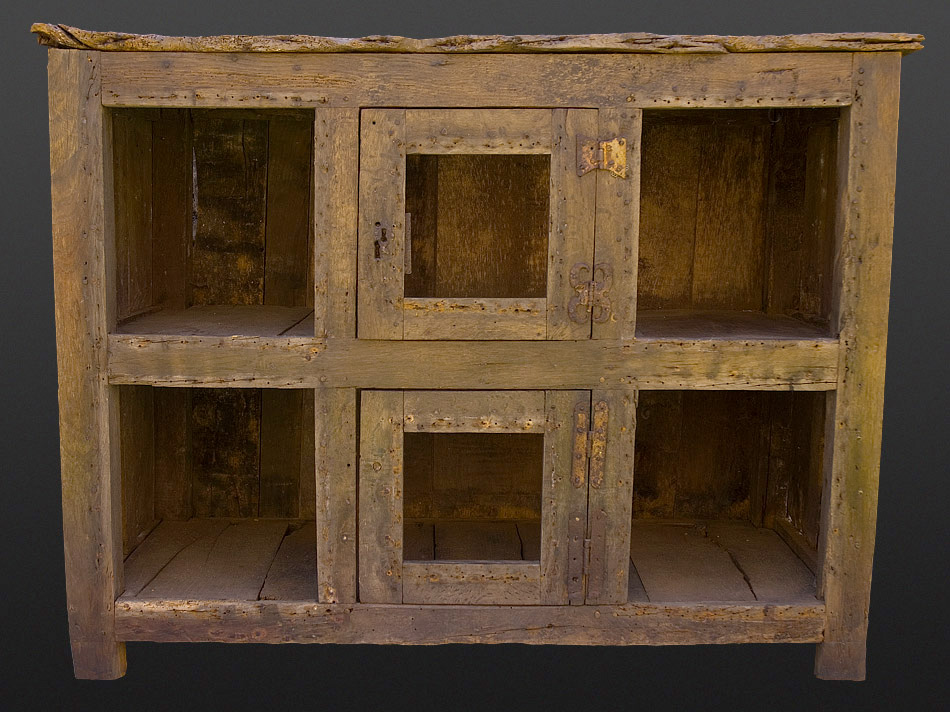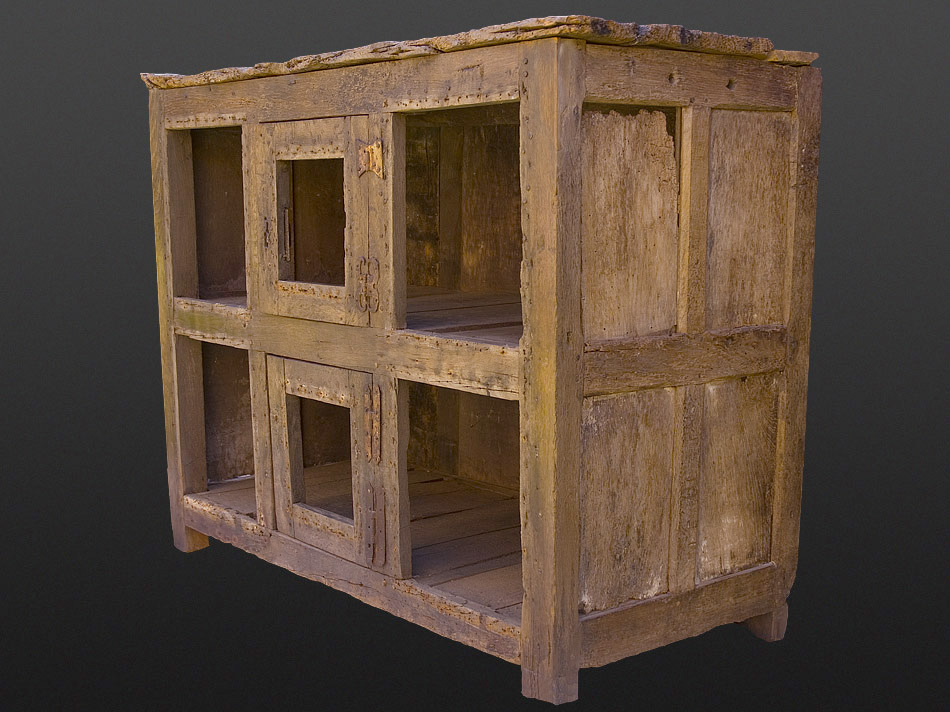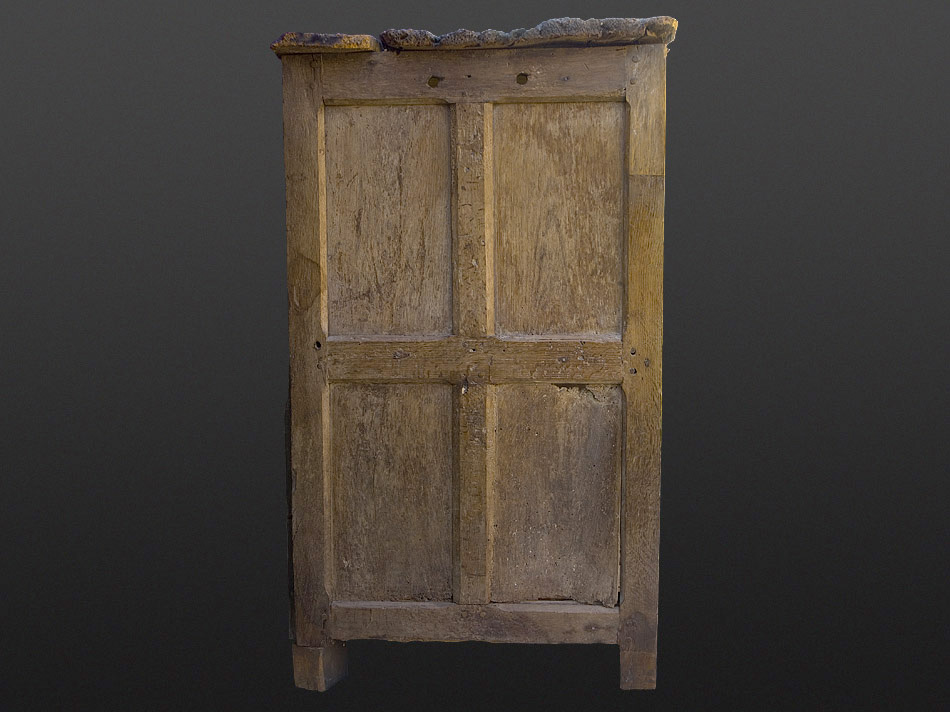Tudor oak food-storage cupboard with doors. Although recovered in an artifactual state, this survivor is an unrecorded representative of a small extant group of mid-sixteenth-century joined case furniture designed with integrated ventilation in order to allow air-flow for the storage of perishable consumables. The framing, proportions, and configuration parallel more elaborate examples intended to fulfill the same domestic role. Essentially, this cupboard is an economically downscaled version of the Prince of Wales Cupboard in the collection of the Victoria & Albert Museum. That iconic object, dating to first quarter of the sixteenth-century two vertically aligned recessed doors flanked by fixed panels, all carved with open tracery. Framed with the same heavy, high-quality stock and robust joints as the best joinery of the period, this cupboard omits the costly carving, resorting instead to an easily breathable fabric nailed in place over the open framing of its central doors and flanking framed voids. Numerous generations of nails probably, many with fragments of fabric still trapped beneath their heads, attest to the cupboards long history of use for its original purpose. In this light, this cupboards as-found condition and multiple generations of in-use repairs intended to prolong its serviceable lifespan only enhance its status as an important document of domestic life within the English household.
The Prince of Wales Cupboard at the Victoria & Albert Museum is illustrated as fig. 17 in Domestic Architecture and Old Furniture by Murry Adams-Acton.


